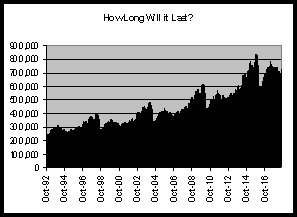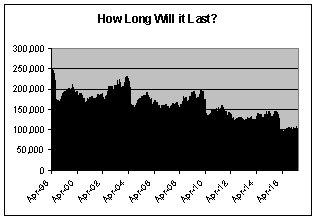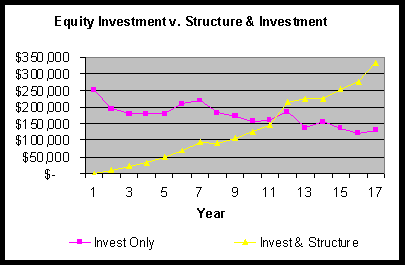When referring to plaintiffs with normal mental capacity, the term “management fee” usually refers to expenses that plaintiffs incur for advice concerning investment decisions. Decisions concerning how their awards are to be spent – on medical care, accommodation, transportation, etc. – can generally be left to the plaintiffs themselves.
Plaintiffs who have suffered an impairment in their mental capacity – usually children injured at birth or adults injured in catastrophic accidents – however, may require assistance with many, if not most, of the decisions concerning expenditure of their awards. In this article, I propose to include the cost of this assistance in the term “management fee” and to investigate what the determinants of this fee will be in the case of plaintiffs with reduced mental capacity.
In the first section of this article, I enumerate the various types of assistance that will be required by these plaintiffs. I call this the “hierarchy of needs,” as the responsibility for this assistance involves a pyramid, or hierarchy, of decision-makers. In the second section, I investigate the costs of this assistance.
A Hierarchy of Needs
The management of the plaintiff’s award requires four types of agents:
Financial manager: Once the court award has been paid to the plaintiff, that amount will have to be invested. This will require either that a trust company invest the award in a portfolio of conservative financial assets, or that a structured settlement be purchased from an insurance company. In either case, a fee may be charged for the management of the plaintiff’s finances. (These are the fees that were discussed in the first article in this edition of the Expert Witness, “The Cost of Managing the Plaintiff’s Investments.”)
Guardian – The role of the guardian is to determine how the invested funds are to be spent: to ensure that the plaintiff is provided food, clothing, shelter, transportation, health care, and emotional care. Generally, it is not intended that the guardian will provide these services directly but will, instead, be responsible for hiring an agent called a case manager (see below), and for providing that individual with directions concerning the types and levels of services that are required. The guardian, for example, might decide that the plaintiff should be moved from his or her own home to a nursing home, but leave the decision about the selection of a specific nursing home to the case manager.
Often, the guardianship function will be performed by a committee which might, for example, include family members, legal representatives, social workers, and a life care planner/cost of care expert. The latter are experts who assist the guardian with the development and implementation of a plan for the care of the plaintiff.
Rehabilitation case manager – The guardian will often consider it necessary to contract with an agent to implement the plan that was developed in coordination with the life care planner. This individual is usually called a rehabilitation case manager, or simply case manager. He or she takes direction from the guardian and reports to the trustee (see below).
These individuals are responsible for:
- the physical safety and emotional and social well-being of the individual in the community – for example, contracting with rehabilitation specialists, physical therapists, educational consultants, and speech and language consultants;
- contracting with care personnel, such as rehabilitation assistants, home support workers, and nursing staff as warranted by the nature and extent of the injuries sustained and the impact of the impairments on functional ability; and
- purchasing and maintaining goods and services, including medically-required equipment, such as wheelchairs and modifications to automobiles.
- They are also responsible for monitoring all of the service-providers that have been hired, to ensure that their functions are being carried out as specified, and for replacing any employees who have resigned or been laid-off.
[As the case manager’s role is primarily to arrange for the purchase of goods and services, he or she may hire a subsidiary set of agents who make the actual purchases. Hence, there may be an additional layer of agents in the hierarchy: purchasing agents.]
Trustee: The trustee performs a “gatekeeping” role, ensuring that the bills incurred on behalf of the plaintiff are paid, that relevant income taxes are remitted, and that expenditures are not mismanaged (or misappropriated). Although one person (for example, a close relative) could act as both guardian and trustee, it is generally recommended that these two functions be separated, in order to provide independent checks on spending patterns.
Management fees
Payment may have to be made to each of the four categories of agents described above. I consider each of them separately here.
Financial Manager: As brain injured plaintiffs and children cannot make their own financial decisions, a third party will have to be employed to invest plaintiffs’ awards. Two options are available: a trust company may act as an investment manager, or an insurance company may provide a structured settlement.
If a trust company has been employed, it will provide its services for a fee that normally varies from about 1.0 percent to 2.0 percent of the value of the investment. Thus, for example, if the trust company is able to obtain a rate of return of 4.0 percent on the investment, from which it deducts a fee of 1.0 percent, the net rate of return will be 3.0 percent. Technically, the financial manager’s fee could be included as one of the costs of caring for the plaintiff. However, the data we recommend the courts use when calculating discount rates – the return on balanced portfolio funds (discussed in the first article in this edition of the Expert Witness,) – and the discount rates that are mandated by many provinces, are already net of investment companies’ management fees. Thus, in practice, no additional allowance will be required.
Similarly, insurance companies’ prices for structured settlements incorporate their costs of management. Hence, if the plaintiff’s award has been paid as a structured settlement, it may not be necessary to provide a separate allowance for the insurer’s management fee.
Note, however, that although it is generally not necessary to include a fee for the financial manager, it may be necessary to include a fee for the trustee (see below).]
Guardian/life care planner: There are three potential sources of guardians: the relatives of the plaintiff, a public agency (often referred to as the Public Trustee’s Office), or a private agent.
Relatives: When brain damage arises from negligence at birth, the parents of the injured child will often act as guardians; and when injury occurs later in life, guardians may be selected from spouses, parents, siblings, adult children, or other relatives. To the extent that these individuals are willing to work for free, it might be argued that no claim for their services can be made against the defendant. However, two counterarguments can be made.
First, for the same reason that relatives are often able to claim for the costs of providing household services or nursing care to the plaintiff, they may also be able to claim compensation for the time and effort required to act as guardians. Second, some allowance must be made for the possibility that the relative guardian will die before the plaintiff and, therefore, that a third party will be needed.
When either of these arguments is accepted, the cost of guardianship can be calculated as the cost that would have been charged by a public or private guardian. (For these, see below.)
Public Agency: Depending on the jurisdiction, Public Guardians may not charge fees for their services, or may charge a below-market fee. It should be noted, however, that all of the experts we have consulted have recommended that, if plaintiffs have large awards, they should not rely on the office of the Public Guardian, as the latter generally deals with relatively small sums.
Private Guardian or life care planner: If it is felt that the Public Guardian is not appropriate, it may be necessary to hire a private guardian. A number of knowledgeable individuals have suggested to me that a life care planner might fill this role. As the function of this individual is to develop a plan for the care of the plaintiff and to ensure that that plan is implemented as intended, it may require only a limited number of hours – perhaps five to ten per month – at approximately $200 per hour. Thus, an annual allowance of approximately $20,000 would not be unreasonable.
A guardian committee may also include a lawyer. If we assume five hours per month at $300 per hour, the annual fee would be $18,000.
Rehabilitation case manager: The costs of hiring rehabilitation case managers vary significantly depending on the severity of the injury to the plaintiff. A U.S.-based life care consulting firm, Caragonne and Associates, has developed an “assessment protocol” for calculating the number of hours of case management that will be required for seriously injured clients. The protocol identifies five dimensions of care, and scores each dimension on the degree of involvement required from the case manager: from low, through moderate, to high. The five dimensions are:
- Level of client’s independence: This dimension measures the extent to which the client needs advice and encouragement. It ranges from high independence, in which the client requires only “periodic encouragement” from the case manager, to low independence/high need, in which frequent intervention is required to assist and orient the client.
- Number of providers of needed services: This dimension ranges from low intervention, in which the client has obtained the resources needed, to high intervention, in which the case manager will have to contact multiple agencies and providers to arrange for the goods and services needed by the client.
- Frequency of appraisal: The more often can the client’s status be expected to change, the greater will be the need for reappraisals by the case manager.
- Coordination of providers: Once a life care plan has been put into place, the case manager will have to coordinate the implementation of that plan. The greater is the number of providers that have to be coordinated, and the more frequent is the number of interventions, the greater will be the number of hours worked by the case manager.
- Travel: The further the case manager has to travel in order to meet with the client and his or her providers, the greater will be the number of hours required.
Caragonne and Associates estimate that if the client’s needs are rated as “high” on four or more of these dimensions, case management will require eight to twelve hours per month. If the client’s needs are rated as “moderate” on most of the dimensions, case management will require five to seven hours per month. Even a “low” rating on most dimensions will require one to four hours per month.
As many brain-injured clients and child plaintiffs will require a high level of services on most of the Caragonne dimensions, it can be expected that case management will require eight to twelve hours per month. Assuming ten hours per month, at $100 per hour, a case manager would cost approximately $12,000 per year.
Trustee: When trust companies act both as financial managers of the plaintiff’s award and as trustees of the plaintiff’s expenditures, they may offer a rate that is lower than the sum of the financial management fee and the trustee’s fee. As practices will vary among companies, it is important that counsel receive clear quotations for the sum of the two services.
If the Public Trustee acts as trustee, it may charge for its services. In Alberta, for example, that fee equals three-eighths of a percent of the total size of the investment – that is, $3,750 per year for each $1million.
When a structured settlement has been purchased from an insurance company, the insurer will not act as trustee. Hence, an additional fee for that service will often have to be calculated. RBC, for example, will act as trustee of a structured settlement for a charge of 5% of the annual annuity payment, subject to a minimum annual fee of $7,500. Tax preparation services would be in addition, at hourly rates, likely under $1,000/yr.
Summary
It has been our observation at Economica that when the courts use the term “management fee” they are usually referring to the fee for a financial manager, to supervise the investment of the plaintiff’s award. What I have argued in this article is that, when the plaintiff is a child or has been brain injured, there are at least three other classes of agents who will be responsible for managing the expenditure of the award, and who may also have to be compensated. In those cases, therefore, the “management fee” may extend well beyond the value normally considered by the courts.
Most importantly, allowance may have to be made for compensation of the guardian, the life care planner, and the case manager; and, when the award has been invested in a structured settlement, allowance may have to be made for trustee fees. As these fees could well exceed $50,000 per year, they could add over $1million to the size of the award to a young person. Hence, it is crucial that these sources of cost be considered seriously.
![]()
Christopher Bruce is the President of Economica; he has a PhD in economics from the University of Cambridge



